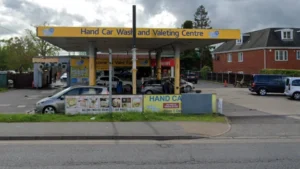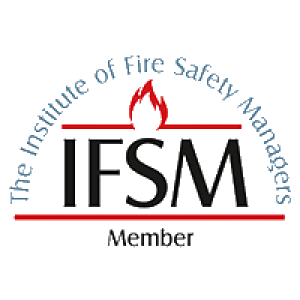Whether you’re a first-time landlord, manage a House in Multiple Occupation (HMO), or oversee a portfolio of properties for a local authority, compliance with The Smoke and Carbon Monoxide Alarm (England) Regulations 2015 is not optional—it’s a legal requirement.
Designed to protect tenants from life-threatening hazards, these regulations place clear responsibilities on landlords to install, test, and maintain alarms in all rented residential accommodation across England.
If you’re letting out property in 2025, especially in the HMO sector, it’s essential to be familiar with both the original 2015 regulations and their amendments introduced in October 2022.
This guide walks you through the legal duties, what constitutes compliance, and the action steps you should take to protect your tenants—and yourself.
What Are the Smoke and Carbon Monoxide Alarm (England) Regulations 2015?
Introduced by the UK Government in October 2015, The Smoke and Carbon Monoxide Alarm (England) Regulations 2015 were created to reduce injuries and fatalities from fire and carbon monoxide (CO) poisoning in private rented housing.
The rules initially applied to private landlords but were expanded in October 2022 to include additional duties and broaden the scope of compliance. Local housing authorities are responsible for enforcement and may issue financial penalties for non-compliance.
If you’re a landlord—whether letting a single-family home, a flat, or a licensed HMO—you are legally bound by these regulations.
Key Legal Requirements for Landlords Under the 2015 Regulations
As of the 2022 amendment, the following duties are mandatory:
1. Smoke Alarms
- You must install at least one smoke alarm on every storey of the property that is used as living accommodation.
- This includes hallways and landings—even if they’re not bedrooms.
- For HMOs, this is in addition to any fire alarm systems required under HMO licensing conditions.
2. Carbon Monoxide Alarms
- A carbon monoxide alarm must be installed in every room used as living accommodation that contains a fixed combustion appliance (excluding gas cookers).
- This includes rooms with:
- Gas boilers
- Oil-fired heaters
- Log burners or open fireplaces
- For HMOs, carbon monoxide protection is critical—especially where there are shared heating systems or older gas appliances.
3. Testing and Maintenance
- Landlords must ensure all smoke and carbon monoxide alarms are in working order on the first day of any new tenancy.
- If a tenant reports a fault, the landlord is legally obliged to repair or replace the alarm as soon as reasonably practicable.
Failure to meet these obligations is a civil offence under The Smoke and Carbon Monoxide Alarm (England) Regulations 2015 and can result in financial penalties of up to £5,000 per breach.
HMOs and Additional Responsibilities
If you operate a House in Multiple Occupation (HMO), your responsibilities go even further:
- HMOs must also comply with The Management of Houses in Multiple Occupation (England) Regulations 2006, which mandate fire precautions and safe living standards.
- Many local authorities require integrated fire detection systems and emergency lighting, in addition to the standalone smoke alarms covered by the 2015 Regulations.
💡 Tip: Don’t assume your HMO licence covers everything. The Smoke and Carbon Monoxide Alarm (England) Regulations 2015 apply to all rented properties—regardless of licensing status.
What Counts as a Fixed Combustion Appliance?
Under the 2015 Regulations, a fixed combustion appliance is anything that burns fuel to generate heat and is permanently installed. This includes:
- Gas or oil boilers
- Solid fuel heaters
- Fireplaces (open or closed)
- Wood-burning stoves
Gas cookers are excluded, but landlords are encouraged to install CO alarms near cookers anyway, particularly in HMOs and older properties.
What Happens If You Don’t Comply?
If a landlord fails to meet the requirements of The Smoke and Carbon Monoxide Alarm (England) Regulations 2015, the local authority has enforcement powers.
They can:
- Serve a Remedial Notice giving the landlord 28 days to comply.
- If the landlord fails to act, the local authority can arrange the required work and recover the cost.
- Additionally, landlords can be fined up to £5,000 per breach, per property.
Importantly, there is no requirement for a tenant to have suffered harm for these penalties to apply. Non-compliance alone is enough to trigger enforcement.
Smoke and Carbon Monoxide Alarm Regulations – Best Practice Recommendations for Landlords
While the law sets out the minimum, following best practice goes a long way toward keeping tenants safe—and protecting your reputation.
Here’s what we recommend:
🔲 Install sealed-battery or mains-powered alarms
🔲 Test all alarms monthly, not just at the start of tenancies
🔲 Keep a written record of all tests, installations, and maintenance
🔲 Install additional alarms in high-risk areas, even if not legally required
🔲 Replace any alarm that’s over 10 years old or showing signs of fault
🔲 Educate tenants on how to test alarms and what to do if they fail
📣 Need help testing or upgrading your alarms? We provide comprehensive alarm audits and installation services for single lets, HMOs, and larger portfolios.
Landlord Action Plan
Here’s a quick action plan to ensure you’re compliant with the Smoke and Carbon Monoxide Alarm (England) Regulations 2015:
| Task | Status |
|---|---|
| 🔲 Install smoke alarms on every floor | ✅/❌ |
| 🔲 Install CO alarms in all relevant rooms | ✅/❌ |
| 🔲 Test alarms on the first day of each new tenancy | ✅/❌ |
| 🔲 Repair or replace faulty alarms promptly | ✅/❌ |
| 🔲 Maintain a log of all alarm checks and servicing | ✅/❌ |
| 🔲 Check additional HMO requirements (if applicable) | ✅/❌ |
Additional Resources
For full legal details and updates, refer to the following:
- 📜 The Smoke and Carbon Monoxide Alarm (England) Regulations 2015 – legislation.gov.uk
- 🏠 Smoke and carbon monoxide alarm rules: guidance for landlords – gov.uk
- 🧯 The Management of Houses in Multiple Occupation (England) Regulations 2006 – legislation.gov.uk
Need Support? We Can Help.
Keeping up with housing regulations can feel like a full-time job—but it doesn’t have to be.
We help landlords, letting agents, HMO operators, and local authorities with:
✅ Full fire safety and alarm audits
✅ Professional smoke and CO alarm installation
✅ Annual compliance checks and reports
✅ Emergency lighting, fire extinguishers, and fire risk assessments
📞 Call us today to book your property safety check
📧 Or email us for a no-obligation quote—we’ll take care of compliance, so you can take care of business.










